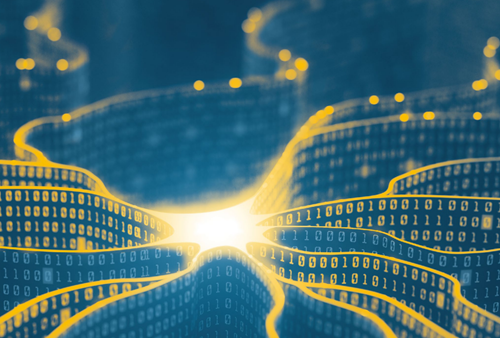In the process of creation of a floor paint, the same product (color) must be produced several times per month. The challenge is to obtain the same shade each time the paint is produced since even minor differences in color cause difficulties in the exploitation of the final product.
To address this challenge and improve the quality of its products, Tarkett relies on the standardization of color references. Inks will be managed at the beginning of the process to create a specific color using the standard of the International Commission on Illumination. On the one hand, it allows to encode each color in a three-dimensional color space, which can be easily processed by computers. On the other hand, it allows to reduce differences between colors that are perceptible to the human eye.
At the beginning of a new production process, a computer automatically defines the paint color based on a sample from the previous production. It calculates the right amount of every composing color to be mixed in order to reach the perfect shade. The second step consists in managing the color in the production of the paint. In order to do so, the paint sample is produced and used on vinyl sheets. The painted vinyl is compared to the one from the previous production.
The main idea is then to analyze the color composition of both vinyls, which allows measuring, helped by machine learning, the distances between colors in the three-dimensional color space. The color composition is then adjusted to reduce these distances, resulting in a new paint having no difference in color visible to the human eye.
More details and explanations in this White Paper, edited by the ILNAS, and focused on Artificial Intelligence: its technology, use cases and applications, trustworthiness and technical standardization.
To address this challenge and improve the quality of its products, Tarkett relies on the standardization of color references. Inks will be managed at the beginning of the process to create a specific color using the standard of the International Commission on Illumination. On the one hand, it allows to encode each color in a three-dimensional color space, which can be easily processed by computers. On the other hand, it allows to reduce differences between colors that are perceptible to the human eye.
At the beginning of a new production process, a computer automatically defines the paint color based on a sample from the previous production. It calculates the right amount of every composing color to be mixed in order to reach the perfect shade. The second step consists in managing the color in the production of the paint. In order to do so, the paint sample is produced and used on vinyl sheets. The painted vinyl is compared to the one from the previous production.
The main idea is then to analyze the color composition of both vinyls, which allows measuring, helped by machine learning, the distances between colors in the three-dimensional color space. The color composition is then adjusted to reduce these distances, resulting in a new paint having no difference in color visible to the human eye.
More details and explanations in this White Paper, edited by the ILNAS, and focused on Artificial Intelligence: its technology, use cases and applications, trustworthiness and technical standardization.
